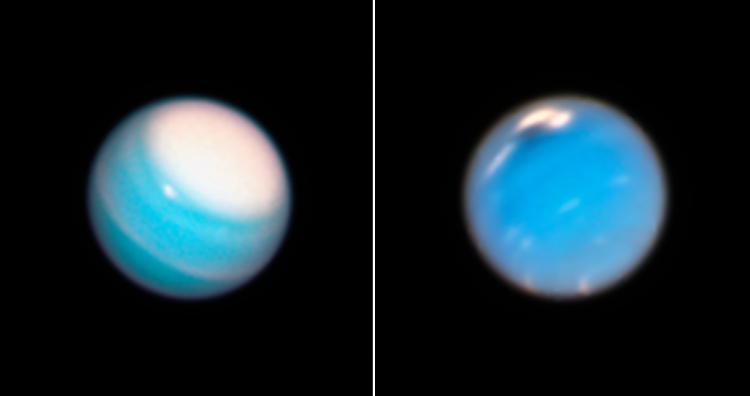Uranus is so far away and dim that you won't be able to see it with your own eyes. It's also difficult to spot in the night sky-a small blue-green dot among the stars. This all changes this week, as Uranus appears alongside a fading Hunter's Moon.
Uranus will be near the moon for the next few nights, as it became full on Wednesday (Oct. 20) at 10:57 a.m. EDT. The moon will still appear fairly full, and brilliant moonlight may make spotting Uranus nearby more challenging.
Similarly, the peak of the Orionid meteor shower will be eclipsed by the full moon this week. The moon's proximity to the faint planet, however, may make it easier to find.
Uranus rises shortly after the moon and reaches its maximum peak in the night sky shortly after midnight. According to the skywatching website In-The-Sky.org, it will come closest to the moon on Thursday (Oct. 21) at 6:39 p.m. EDT.
The closest approach will not be visible to skywatchers in the U.S.; your greatest chances of seeing Uranus with the moon will be early Thursday morning, between midnight and the beginning of twilight.
You'll get another shot if you don't make it Thursday morning. On Friday morning, Uranus will still be near the moon, and with the waning moon being slightly less lighted than the night before, the lessened moonlight may even make Uranus easier to identify.
It will also be quite helpful in locating the seventh planet. All you have to do is gaze east-specifically, just north of east-to see the waning Hunter's Moon rise. Check out this moonrise and moonset calculator to find out the exact time of the event in your town.
The planet Uranus will be directly above it. You may be able to see it with your naked eye as the night sky darkens and the Moon and Uranus rise higher in the sky.
Despite its seeming ease, the savvy planet-gazer will have a pair of binoculars or a small telescope ready for this one-after all, the Moon will still be quite bright, and glare may make things tricky.
A tip is to look for the small teal speck in the darkest possible region at the darkest possible time of night to see it.






